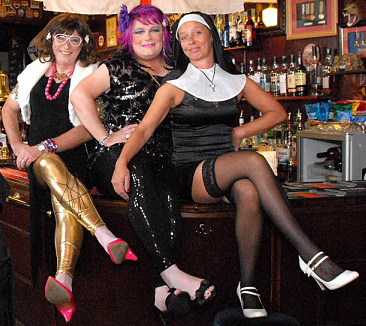There are numerous unanswered questions.
- Bess was either unaware of, or chose not to mention, Falk's defrocking by The Episcopal Church in 1966, although it appears that this was known to figures in the ACC at the time of Falk's 1991 departure. While we now have confirmation from the Diocese of Fond du Lac that he was defrocked, we still don't know the circumstances that led to that outcome. The Episcopal Church tends to regard deposition/defrocking as a very last resort, and in recent decades has not used it as discipline for things like simple adultery, no matter how conspicuous. I've heard several versions of the Falk story, at least one of which would be, if true, explosive. Should such circumstances emerge, this would probably have a near-fatal effect on the ACA, although the ACA is rapidly shrinking in any case. It would certainly be prudent for the APA, considering merger with the ACA, to investigate this matter further. As the case of retired Los Angeles Cardinal Roger Mahony indicates, even a retired or semi-retired status does not insulate a prelate from major scandal.
- His Wikipedia entry says, "From 1976 to 1981 he was President of General Growth Management Company in Des Moines, Iowa." We know nothing of Falk's career from his defrocking in 1966 to his appointment at General Growth Management in 1976, ten years later, nor why, after five years, he left that position. However, the other circumstances of his biography suggest his business career may have been as rough a ride as his ecclesiastical career.
- We know nothing of how St Aidan's Des Moines got its start, apparently de novo as a "continuing" parish, nor how it came to call Falk, a defrocked Episcopal priest, as its rector.
- We know nothing of how Falk came to the attention of "Bishop" James Mote, one of the original "continuing" bishops who emerged from the 1977 St Louis meeting. Mote's motto was "Play dirty and pray!" Did this have a bearing on Falk's rapid rise under Mote within the ACC? It's puzzling that Mote, who left The Episcopal Church over doctrinal issues, would choose to ally himself so closely with an ex-cleric who'd left it due to scandal. One would think the grapevine would have made the circumstances of Falk's departure known to Mote.
- Bess's narrative ends before Falk's retirements, in 2002 as Primate of the Traditional Anglican Communion, in 2007 as Bishop of the Missouri Valley, and apparently sometime after 2009 as President of the ACA House of Bishops. I've been told that the 2002 retirement as Primate of the TAC was forced and due to a "miscalculation", of which we currently know nothing.
- Nor do we have a clear picture of Falk's continuing behind-the-scenes role in the TAC and the ACA. By his own testimony, he continued to exercise episcopal authority over St Mary of the Angels as of 2010, involving himself in the Patrimony of the Primate, although the Patrimony was specifically the creature of Archbishop Hepworth. What is Falk's de facto current role?
- What was Falk's role in the forced retirement of Hepworth as TAC Primate? It's worth noting that Samuel Prakash, Hepworth's replacement as "acting Primate" of the TAC, was among those consecrated with Falk at Deerfield Beach, FL in 1991, when Hepworth wasn't even a glimmer in anyone's eye.
